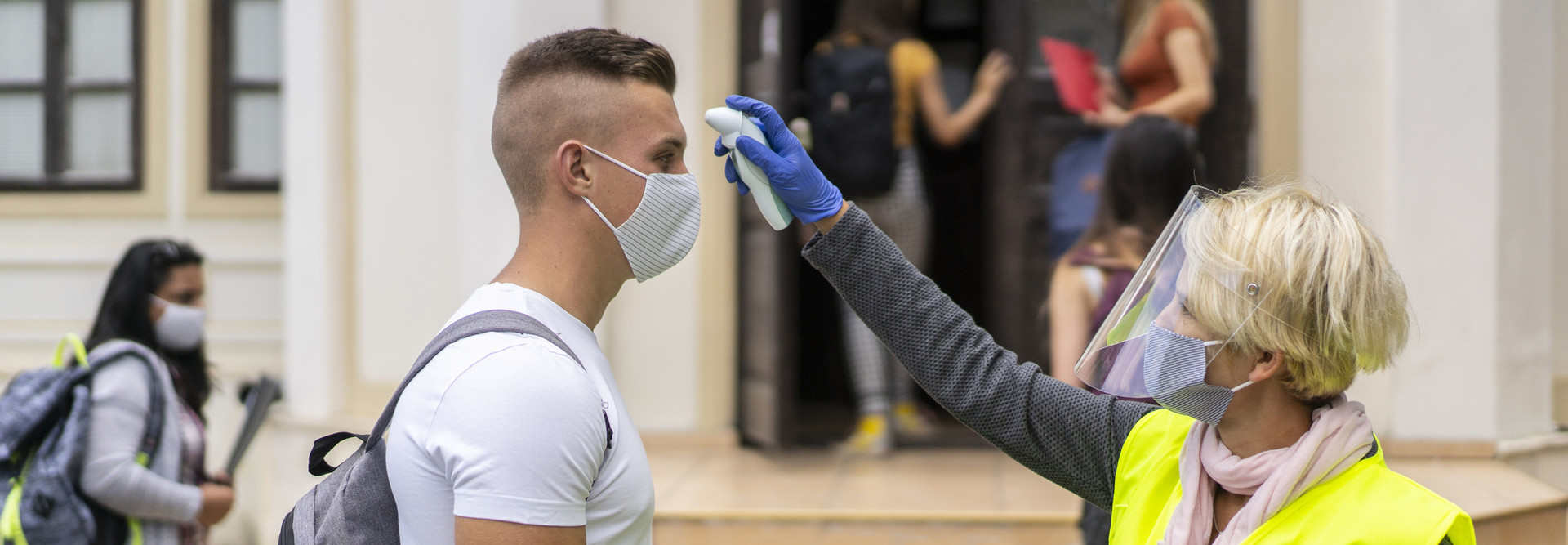Tips for Selecting a Good Face Shield
Perencevich recommends that high-risk populations on campus — such as instructors over the age of 40 and those with chronic conditions — wear plastic face shields in addition to masks.
Although there is no substantial data yet on which types of face shields are more effective, Perencevich says it is better to choose one that covers the entire face.
“Ideally, you’d want something that covers the brow, under the chin, and the sides of your face,” he says.
He points to the Dome Shield developed at the Wyss Institute at Harvard, which covers more areas of the face than some other face shields on the market.
John Hick, an affiliated professor of emergency medicine at the University of Minnesota Medical School who co-authored a study on PPE, agrees the shield should cover the entire face. “And make sure the material doesn’t fog and withstands cleaning well,” Hick says. “Some plastics become fogged after a few cleanings.”
Hick also recommends choosing a face shield that fits well and feels comfortable on the forehead. Make sure the strap is not losing tension over time and that it remains securely attached to the shield, he says.
LEARN MORE: Read about the emerging technologies that track COVID-19 in higher ed.
Other Ways to Increase Safety: More Barriers, More Protection
Face shields — in addition to masks and other safety measures — can help reduce COVID-19 infection rates, but they are not a panacea. Until widespread diagnostic testing and contact tracing is available in the U.S., it is better to take more safety measures than fewer.
It is worth noting that South Korea, a country that managed to flatten the curve without provoking an economic disaster, installed protective barriers in their reopened schools.
American higher education institutions could potentially benefit from incorporating South Korean school reopening practices — such as installing large protective screens, partitions or separation panels at desks, in cafeterias and in offices.
“Every bit helps,” Perencevich says.











